Understanding Strategic Family Therapy
Strategic family therapy is a structured, goal-oriented approach to addressing complex family issues that go beyond individual concerns. Unlike traditional therapy, which often focuses solely on personal challenges, strategic family therapy examines interaction patterns, communication dynamics, and relational structures within the family system.
At The Cave Clinical Services, we help families in California navigate conflicts, strengthen relationships, and foster long-term harmony through a proven four-stage therapeutic process. This method empowers family members to develop actionable solutions, improve communication, and achieve sustainable behavioral change.
Strategic therapy is especially effective for families experiencing:
- Communication breakdowns that prevent understanding between parents, children, or siblings.
- Behavioral challenges in children or adolescents, including defiance, anxiety, or withdrawal.
- Parenting conflicts, especially in co-parenting or blended family situations.
- Stress due to life transitions, such as relocation, divorce, or new family members.
Stage 1 – Assessment and Problem Identification
Initial Family Assessment
The first stage of strategic family therapy is a comprehensive evaluation of the family system. Therapists at The Cave Clinical Services examine roles, relationships, communication patterns, and recurring conflicts to fully understand the underlying dynamics.
Key elements of this assessment include:
- Family History: Understanding generational patterns of behavior and recurring conflicts.
- Behavioral Observations: Documenting interactions, non-verbal communication, and emotional responses.
- Identifying Symptoms: Recognizing issues such as anxiety, aggression, withdrawal, or defiance that may indicate deeper relational problems.
This thorough assessment ensures that therapists identify not only surface-level challenges but also the root causes of family dysfunction, providing a strong foundation for meaningful intervention.
Setting the Foundation for Therapy
During the assessment, building trust and rapport with all family members is essential. At The Cave Clinical Services, we ensure every member feels heard and respected, creating a safe environment for sharing concerns.
By establishing this foundation, therapists can:
- Develop tailored treatment plans that reflect family-specific needs.
- Increase the likelihood of active participation and engagement from all members.
- Reduce resistance to change and foster collaborative problem-solving.
Stage 2 – Goal Setting and Strategic Planning
Collaborative Goal Setting
Once the assessment is complete, therapists work with the family to define clear, actionable, and measurable goals. Goal setting is collaborative, ensuring that each family member contributes and feels invested in the process.
Examples of therapy goals include:
- Improving parent-child communication to reduce misunderstandings and foster mutual respect.
- Reducing sibling conflicts through structured interaction exercises and conflict resolution strategies.
- Supporting adolescent behavioral changes while maintaining cohesion within the family unit.
By setting achievable goals, the family and therapist can track progress and maintain focus throughout the therapeutic process.
Strategic Planning
At The Cave Clinical Services, goal setting is paired with strategic planning, where therapists outline the sequence, timing, and type of interventions necessary to achieve desired outcomes.
Strategic planning includes:
- Identifying specific therapeutic techniques tailored to the family’s unique situation.
- Determining the duration and frequency of sessions for optimal results.
- Establishing short-term milestones and long-term objectives for measurable progress.
This ensures therapy remains structured, goal-oriented, and effective, maximizing the positive impact on family dynamics.
Stage 3 – Intervention and Implementation
Tailored Therapeutic Interventions
The intervention stage is highly active and directive, focusing on changing patterns that maintain conflict or dysfunction. Therapists at The Cave Clinical Services employ evidence-based techniques designed to foster healthier family interactions.
Common interventions include:
- Behavioral Directives: Assigning specific tasks to encourage positive communication or cooperation.
- Reframing: Helping family members view challenges from a new perspective to reduce blame or defensiveness.
- Paradoxical Interventions: Using counterintuitive approaches to encourage behavior change effectively.
Monitoring Progress During Implementation
Therapists continuously evaluate family responses during intervention, making adjustments to techniques as needed. This ensures strategies remain effective and aligned with the family’s evolving needs.
Progress monitoring involves:
- Observing improvements in communication, conflict resolution, and emotional expression.
- Identifying areas that may require additional focus or support.
- Providing feedback and reinforcement to maintain motivation.
Enhancing Communication and Cooperation
Effective intervention emphasizes collaboration and skill-building. Families learn practical tools for:
- Constructive expression of feelings and needs.
- Problem-solving without escalation or resentment.
- Strengthening mutual understanding and empathy.
Through structured exercises, guided discussions, and role-playing, families can transform unhealthy dynamics into resilient, positive patterns.
Stage 4 – Evaluation and Follow-Up
Measuring Outcomes
The evaluation stage determines the effectiveness of interventions. Families and therapists review the progress made toward goals, assessing improvements in communication, behavior, and overall family cohesion.
Key metrics include:
- Reduction in the frequency and intensity of conflicts.
- Enhanced emotional connection and support among family members.
- Observable positive behavioral changes in children or adolescents.
Long-Term Planning and Maintenance
At The Cave Clinical Services, families receive guidance on sustaining progress after therapy concludes. Recommendations may include:
- Periodic follow-up sessions or booster interventions.
- Continued practice of communication strategies and problem-solving skills.
- Proactive approaches to addressing potential future challenges.
Long-term planning ensures that positive change is lasting and that families are equipped to navigate future challenges independently.
Benefits of Strategic Family Therapy with The Cave Clinical Services
Strategic family therapy provides families with tangible, lasting benefits, including:
- Efficient Problem Resolution: Directly addressing issues rather than merely discussing symptoms.
- Improved Communication: Teaching constructive dialogue techniques for long-term harmony.
- Behavioral Change: Supporting children and teens in developing positive habits while correcting problematic behaviors.
- Stronger Family Bonds: Building trust, respect, and cooperation across all family relationships.
Families working with The Cave Clinical Services consistently experience transformative outcomes, resulting in healthier, more resilient family systems.
Common Challenges Addressed by Strategic Family Therapy
Parent-Child Conflicts
Therapists guide families in resolving conflicts, establishing boundaries, and enhancing mutual understanding between parents and children.
Sibling Rivalry
Structured interventions help siblings develop cooperative behaviors and reduce unnecessary conflict.
Marital Tension Impacting Family Dynamics
Therapy addresses the indirect effects of marital stress on children and other family members, fostering overall harmony.
Behavioral Issues in Adolescents
Therapists create targeted interventions to address defiance, academic struggles, and social challenges, all while supporting the family system.
Why Choose The Cave Clinical Services for Family Therapy in California
- Expert Clinical Team: Certified therapists with extensive experience in family systems.
- Evidence-Based Practices: Techniques grounded in research and proven success.
- Customized Care Plans: Tailored strategies for each family’s unique dynamics.
- Commitment to Standards: Transparent, authoritative, and reliable care.
Families choose The Cave Clinical Services because of our professional, results-driven approach and dedication to fostering long-term family wellbeing.
FAQs About Strategic Family Therapy
How long does strategic family therapy take?
Typically 8–20 sessions, depending on family complexity, with optional follow-up support.
Is therapy effective for all family types?
Yes, it is adaptable to single-parent, blended, and multigenerational households.
Can children participate in all stages?
Absolutely. Children’s participation is age-appropriate, ensuring understanding and engagement.
How is progress measured?
Progress is tracked through improved communication, behavior changes, and goal achievement.
What makes The Cave Clinical Services different?
We provide personalized strategies, expert guidance, and a focus on sustainable family growth.
Final Thoughts: Strengthen Your Family with The Cave Clinical Services
Strategic family therapy is a structured, results-driven approach that addresses the root causes of family conflict while building healthier communication patterns and stronger relationships. By following the four stages, assessment, goal setting, intervention, and evaluation, families gain the tools to resolve issues today and prevent problems tomorrow.
At The Cave Clinical Services, we combine evidence-based interventions with compassionate guidance, helping families in California navigate complex challenges effectively. Professional support ensures that family members grow together, strengthen their bonds, and establish a foundation for long-term harmony, resilience, and emotional well-being.

